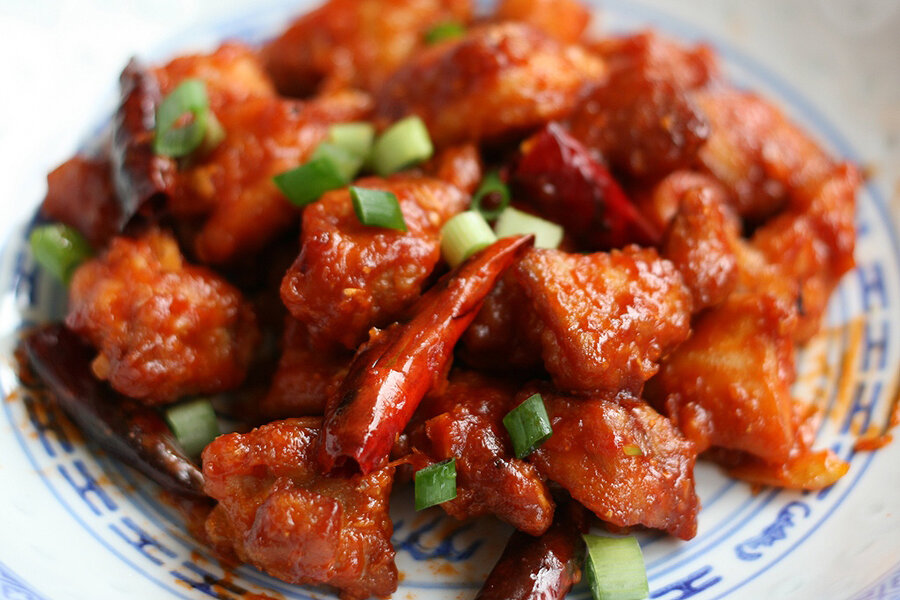By Patricia Tanumihardja, Pickles and Tea
General Tso’s chicken
Serves 4
Although I’ve seen potato starch (or flour) in several Japanese recipes (in particular, chicken karaage), I’ve never used it before and was pleasantly surprised. The chicken turned out light and crispy and the frying oil was clean, i.e. no floaty bits! This is good news for the gluten-free. You can substitute potato starch for all purpose flour in many recipes from sweet and sour chicken to honey pork chops. If you don’t have potato starch, corn starch is fine.
Sauce
1 tablespoon + 2 teaspoons granulated sugar
1 teaspoon tomato paste
1 teaspoon potato starch
1-1/2 tablespoons rice vinegar
1 tablespoon soy sauce
1-1/2 teaspoons sesame oil
1/4 cup water
Marinade
1 tablespoon soy sauce
1 tablespoon Shaoxing Chinese wine or dry sherry [editor's note: optional may substitute orange juice]
1 egg white, beaten
2 tablespoons potato flour
1 pound (4 to 5) skinless, boneless chicken thighs cut into 1-inch chunks
Vegetable oil for frying
8 dried red chilies, shoulders snipped and seeds removed
2 teaspoons finely chopped ginger (1×1-inch piece)
2 teaspoons minced garlic (2 large cloves)
Chopped green onions for garnish
1. For the sauce, combine the sugar, tomato paste, potato starch, rice vinegar, soy sauce, sesame oil, and water in a small bowl. Stir until the potato starch has dissolved and no more lumps are visible. Set aside.
2. For the marinade, combine the soy sauce, Shaoxing wine (if using), egg white,and potato starch in a large bowl. Add the chicken and mix well to coat.
3. Pour about 1-1/2 inches oil into a 14” wok or Dutch oven and set over high heat until the oil reaches about 350 degrees F. Carefully lower the chicken into the oil (preferably piece by piece so they don’t stick) and fry in batches for 3 to 4 minutes or until crisp and golden. Using a metal spider or slotted spoon, transfer the chicken to a plate lined with paper towels. Repeat until all the chicken is cooked (I had 3 batches). Let the oil cool down a little and pour into a heatproof container (I used a glass jar). Wipe the wok clean.
4. Set the wok back on the stove over high heat. Add 2 tablespoons oil. When hot, toss in the chilies and stir for a few seconds, until they just start to darken in color. Don’t let them turn burn! Turn the heat down to medium and stir in the ginger and garlic. Cook for about 30 seconds, or until fragrant. Add the sauce, stirring as it thickens. Return the chicken to the wok and stir continuously to coat. Remove to a serving dish and scatter with green onions. Serve with freshly steamed rice and a vegetable side dish.
See the full post on Stir It Up!








